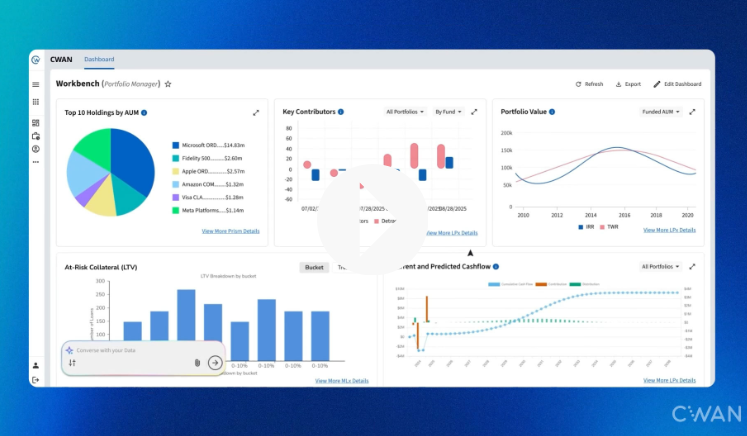Scientists say an artificial intelligence program that they compare to ChatGPT has helped them create one of the most detailed maps of the mouse brain to date, with 1,300 regions and subregions marked on the map.
Some of those subregions have never been charted before — and the researchers say there’s more to come. “I think there are already indications that we can go beyond what we see now,” said Bosiljka Tasic, director of molecular genetics at Seattle’s Allen Institute for Brain Science.
The mapping effort, led by researchers at the University of California at San Francisco and the Allen Institute, is detailed in a study published today in the journal Nature Communications.
“Our model is built on the same powerful technology as AI tools like ChatGPT,” senior author Reza Abbasi-Asl, a neuroscientist at UCSF, said in a news release. “Both are built on a ‘transformer’ network which excels at understanding context.”
That context could be important for treating neurological ailments, Tasic told GeekWire.
“Location is everything in the brain,” she said. “Defining the geography of the brain, and then defining all these regions and their functions, not only leads to better understanding, but also better ability to treat.”
More detailed maps of the brain’s cellular structure could lead to more targeted drug treatments that cause fewer side effects. “We always want to go toward better, more precise brain therapies, but in order to do that, you need to know where you need to interfere, what went wrong in what place, and what you need to fix,” Tasic said. “And if you don’t have the map, how are you going to know where it is?”
Mapping the brain’s neighborhoods
Brain-mapping efforts have typically relied on human interpretation of the brain’s anatomy, but scientists are getting better at identifying the location and function of millions of individual brain cells. They’re getting so much better at collecting huge masses of data that they need AI to help with the interpretation.
“We are at a point where we have amazing experimental technology, so next-generation sequencing is completely revolutionized,” Tasic said. “Our way to define cell types — the fact that you can measure thousands of genes per cell, and define cells that are similar as a cell type — has transformed biology.”

The availability of software that can deal with such high-dimensional data is making this “an amazing time for a neuroscientist,” she said.
The key to the newly published study is an AI model called CellTransformer. The model sifts through huge sets of data about the locations and functions of brain cells, known as spatial transcriptomics data sets, to determine which cells belong in the same “neighborhood” of the brain.
CellTransformer analyzed spatial transcriptomics data about 9 million cells in more than 200 tissue sections that were taken from the brains of four individual mice. At first, researchers programmed the model to define the boundaries of 25 regions in the brain. Eventually, they raised the resolution to define 670 regions and subregions. At each level of resolution, CellTransformer’s brain maps matched what had been defined previously by human experts.
Then the dial was turned up to produce 1,300 regions and subregions. At that level, CellTransformer successfully replicated maps of cataloged regions of the brain. It also identified previously uncataloged, finer-grained subregions in areas of the brain that are currently poorly understood.

Tasic said the process was like going from a map that showed only continents, or only countries, to a map that showed states, cities and even the neighborhoods within cities.
“What we’re saying is, let’s take any cell and ask, ‘Who are the neighbors?’ And then, based on the commonality of the neighbors, call it a region,” she said. “Basically, that’s what CellTransformer did.”
Some of the previously uncharted subregions are in the midbrain reticular nucleus, which plays a complex role in processing sensory and motor information. Other newly identified subregions are in the superior colliculus, a part of the midbrain that processes sensory information and initiates eye, head and body movements to focus on objects of interest.
Focusing on new neuro-frontiers
Tasic said it’s possible to turn up the dial on CellTransformer’s algorithms to produce maps of the brain that are even more detailed. “Now, the question is, which ones are meaningful, in what way, and what do they represent biologically?” she said.
Another question has to do with what to call the newly characterized subregions. “Just imagine that you came to a new land, and you are seeing there is this and there is that. But now I need to name it. Now I need to see what else is around,” Tasic said. “We want to give meaningful, systematic names and also reference how it relates to older maps.”
Perhaps the biggest questions relate to how the newly published map, which is based on cell types, will line up with maps that trace connections between cells, or patterns of brain-cell activity. “I’m just hoping for more systematic data collection, more systematic data analysis, and more multimodal models — models that will not only measure gene expression and cell type, but connectivity and productivity, and define brain regions based on all of those,” Tasic said.
Tasic said the AI-based techniques that were developed for mapping mouse brains are “absolutely extendable to the human brain,” but she doesn’t expect that to happen overnight.
“The limit is actually data collection,” she said. “The human brain is huge, so that’s one problem. … I don’t want to give any estimates, but it will take maybe a decade more to just collect [data about] the full human brain at the level of detail that we did for the mouse.”
UCSF researcher Alex Lee is the principal author of the Nature Communications study, titled “Data-Driven Fine-Grained Region Discovery in the Mouse Brain With Transformers.” Other authors include Alma Dubuc, Michael Kunst, Shenqin Lao, Nicholas Lusk, Lydia Ng, Hongkui Zeng, Bosiljka Tasic and Reza Abbasi-Asl.










